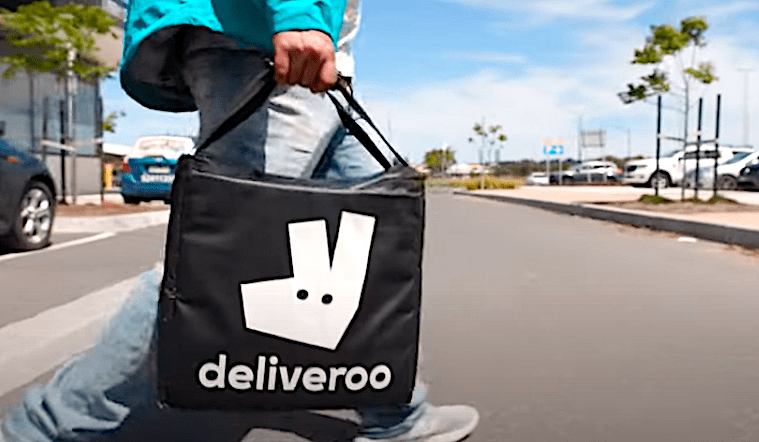The Gig Economy look-back is an attempt to see the transformation, expected and unexpected since my very first post on this subject.
The first post on the Gig Economy was on 17 December 2020. That’s 30 months ago and 6 months short of 3 years.
Without even going back I can say confidently that the core model of the Gig Economy remains intact. And it continues to be attractive for all including entrepreneurs, workers and consumers.
Amazingly it continues to be attractive to workers primarily because of the work hours construct that it offers that conventional employment can’t. This despite the slew of court, labour bodies’ and governments’ actions to frame their classification and rights.
In many ways it is still evolving but the appealing core elements of the model are still there. And here they are ;
- flexible work days and hours as well a sense of independence for an individual
- ability to optimise resources so there is coverage around the clock for the body corporate
- technology related innovations with use of smartphone to recruit, engage and provide the service that benefit the World.
Transformations that we see
In many ways the Gig economy has transformed how we interact to receive and consume the daily basic needs – transportation and food in particular. Definitely a paradigm change.
I know of so many people that no longer hail a traditional taxi even if it easy to get one. I know even more people that will rely on food delivery a few times a week at home and at the work place.
And we see transformation on a daily basis on the way to work and back. Even during weekends. We see them on our street and in our neighbourhoods ferrying passengers and delivering food on their clearly liveried bikes.
The Gig Economy is the subject of constant news on a regular basis. Whether it is about IPOs, defining a platform employee or new features unveiled on the phone app of a ride hailing company. There are discussions on social media and online forums on new teaser rates, discounts on food delivery and rides and which app to switch to get the best deals for the moment.
One way to appreciate and recognise the transformation is to list the milestones of the gig economy. It will indicate the trajectory of evolution. It will also cover the core elements of the model. The companies, the workers, the sectors and enabling elements such as online platforms.

The smart phone and app are the key enablers
The single biggest enabler and the catalyst for the paradigm shift remains the mobile phone apps. Truly a core element that has been understated.
Uber and Lyft pioneered it and many consider it as the starting point of the gig economy as both the customer and the worker do everything on the phone and the app.
Even today, the product, service offerings, customer service etc are differentiated by continuously improving phone app features. Just observe competing rivals’ app features in the same sector such as Uber Eats and DoorDash over period of 6 months.
These app innovations reverberates outside their sector and the gig economy and into the conventional economy and the whole World benefits.

Key milestones of the gig economy from 2009 to 2023
- 2008 – TaskRabbit’s pioneers online marketplace for outsourcing work. Made it easier for people to find work and earn income on a flexible basis.
- 2008 – Airbnb’s founding. Revolutionised the hospitality industry. Home owners enter the market and it becomes popular across the World.
- 2009 – Uber and Lyft emerge. Era of the gig economy model truly begins. Concept of ride-hailing and transforming the transportation industry.
- 2010s – Freelancer platforms gain traction. Upwork (formerly oDesk and Elance), Freelancer.com, and Fiverr grow in popularity expanding gig work.
- 2010s – Food delivery platforms grow. Postmates, Grubhub, DoorDash, and Deliveroo see significant growth and new players emerge in various countries attracting thousands of workers.
- 2012 – Expansion of gig work to other industries. Beyond transportation and delivery. Platforms catering to freelancers in fields like design, writing, programming, marketing, and more.
- 2017 – Legal challenges on worker classification gather momentum. Numerous legal battles across mainly developed countries. Workers seeking standard employment contracts.
- 2020 – COVID-19 pandemic highlights the gig economy’s resilience. People turned to gig work to make ends meet amidst widespread job losses.
- 2021 – Gig worker protections. Governments and regulators worldwide begin implementing worker protection policies and regulations.
- 2022 – IPOs and market consolidation in mid-flow. Gig companies go public. Including Uber, Lyft, DoorDash, and Airbnb, as the industry’s matures. Markets consolidates as larger companies acquire smaller gig economy platforms.
- 2023 – Block to California’s Proposition 22 is overturned. Companies need not follow standard employment terms under certain conditions. Landmark decision for app based gig work in the transport sector.

Recap of posts in the gig economy genre
- December 2020 – Technology driven food on demand ( the important role of App for the gig economy )
- January 2021 – The Gig economy and its continuing evolution
- February 2021 – Uber’s gig workers and the UK Supreme Court ( the fight to make the worker an employee )
- February 2021 –Gig economy and on-demand work ( continuing the fight in Australia )
- April 2021 – Waves and enablers of the gig economy
- May 2021 – Dark or ghost kitchens of the gig economy
- June 2021 – A remote working city, Adelaide ( how Adelaide is well placed in the gig world for remote working )
- August 2021 – Are gig economy executives a thing yet? ( will there be executives and managers as part of the gig workforce )
- September 2021 – Finding Australia’s dark kitchens
- December 2021 – Uber Eats vs DoorDash Sydney Challenge ( 2 apps and their performance in Sydney CBD )
- April 2022 – Women in the gig economy
- June 2022 – Dark Stores (its emergence and likely demise)
- August 2022 – Ultrafast Grocery ( the new punt for venture capitalist )
- October 2022 – The Zapp model ( gig and non-gig terms, an attempt with employees rather than workers )
- December 2022 – Deliveroo leaves Australia
- February 2023 – Platform workers ( crystallisation of terms “platform” and “platform workers” in the gig dictionary )
- April 2023 – California’s Proposition 22. ( the fight not to convert to employee classification )

What next?
The key thing on the corporate front is the continued role of existing and new start-ups and their venture capital partners in driving the gig economy. Model variations will be tested while retaining the core elements.
Market consolidation continues, a trend first noticed about 3 years ago . For Australia the case in point is the exit of a pioneer player Deliveroo and dominance of later arrivals such as Uber Eats and DoorDash.
Consumers will continue to make decisions that determines which model variation works and which player succeeds.
March of new employee remuneration and safety aspects continues with Governments addressing gaps and setting much needed worker protection standards.
Employees of Gig economy companies still want flexibility and a sense of independence with some prepared to forgo standard contract employment.
They want to pick the day and time when they want to switch on the phone app to receive booking and orders.
In the case of platform workers, the ability to set terms and remuneration on a job basis.
The final observation is an interesting quirk. The very people that innovate these models and build the enablers that drive the gig economy are not in the Gig Economy. They are classified as employees with standard contracts, salaried and work within a conventional corporate structure.
And that corporate conventional framework too will remain. I am talking about venture capitalists, start-up entrepreneurs, their staff including those that engineer enabling devices to the digital work flow.
And nearly all of them despite their place in the conventional economy passionately believe in the Gig Economy.
